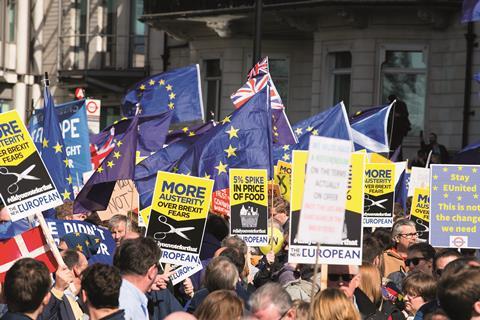The big disappointment of the year was, without doubt, the story on the two big-picture issues that define the environment in which our industry works

The big disappointment of the year was, without doubt, the story on the two big-picture issues that define the environment in which our industry works – the economy and Brexit. If the bird looked big, plump and tender when it went into the oven, by the time it emerged at the end of the year it was an unappetising dry hulk.
It may be hard to remember now, but the year started with Theresa May enjoying strong support for her vision of Brexit, outlined in a January speech, in which the UK would leave both the single market and the customs union. This was seen by both Brexit supporters and many middle-ground pragmatists as simply a realistic reaction to the EU’s insistence that freedom of movement was a non-negotiable condition of single market membership. Leaving the customs union was portrayed as a declaration of confidence in the UK’s ability to strike trade deals around the world on its own terms.
But as May’s authority evaporated, substantive progress on the detail so vital to industry halted while ministers fought over the big-picture vision and were repeatedly rebuffed by EU negotiators. In February, it became clear that despite making up nearly a tenth of the economy, construction was not considered a priority industry in the government’s EU negotiations. So, while ��ɫ����TV’s Better Brexit campaign called for a range of measures to help construction deal with the fallout from exiting the EU, there has been little sign the government is listening, let alone preparing to offer the industry any help on issues such as EU-born workers, who make up around half of all site staff on London housebuilding schemes, according to this month’s census from the Home Builders Federation. Last month, the Construction Products Association said Brexit was hitting output growth, while consultant Arcadis in the same month warned firms to set aside funds in case no deal was reached.
A similar game of two halves was seen on the overall economy. In chancellor Philip Hammond’s spring Budget, he was able to report that the UK economy had weathered the Brexit shock far better than expected, and that in 2017 the deficit would be far lower than predicted, and growth higher at 2%. But by November all this optimism had fallen away, and Hammond lowered overall GDP growth back to 1.5% as UK productivity forecasts were slashed. In construction specifically, output growth initially stagnated, then started a slow decline, with third quarter output 1.4% down on the first. Worryingly for next year’s prospects, new orders started dropping much more quickly, down 13% in the second quarter as the commercial office market slowed– although high value awards related to HS2 did boost new orders in Q3.

























No comments yet